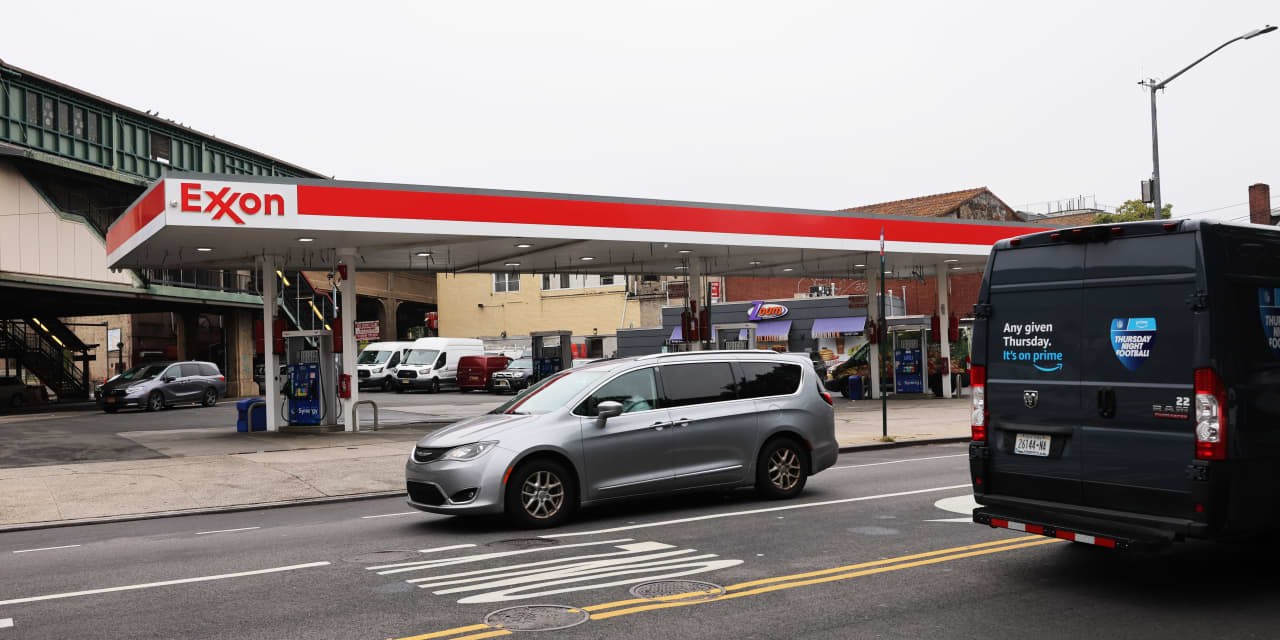Exxon Mobil said it is making progress on projects that should keep its oil production growing for years. But that message seems to have been overshadowed by otherwise disappointing news about earnings, plus the fact that the company is set to spend more money on capital projects than some analysts had expected.
Exxon (ticker: XOM) reported adjusted third-quarter earnings of $2.27 per share, below expectations for $2.37. Revenue of $90.8 billion missed expectations for $93.4 billion. The stock was down 2% on Friday, while stock in Chevron (CVX), whose earnings miss was significantly worse, fell 5%.
Exxon stock fell even though management is increasing the quarterly dividend to 95 cents from 91 cents, boosting the dividend yield to 3.6% at current prices.
Some of Exxon’s lesser-watched businesses have been struggling. Earnings from sales of chemicals, for instance, fell sharply because supply is outpacing demand, hurting margins.
The company’s capital budget looks like it will come in at the high end of its expected range of $23 billion to $25 billion this year, a potentially worrisome sign for investors who want Exxon to spend more money on shareholders than on drilling.
Analysts, however, were mostly focused on Exxon’s growth plans, which are set to ramp up in the coming quarters. The company produced 3.7 million barrels of oil a day for the quarter. But it is on the cusp of a growth spurt as it preps to boost its production to 5 million barrels per day by 2027. By the third quarter next year, output is expected to be at 4.3 million.
The company’s biggest growth engines now are in the U.S. Permian Basin and offshore Guyana, where it is drilling for oil in an area that is expected to hold billions of barrels. Exxon agreed this month to buy Pioneer Natural Resources (PXD), a major shale-oil producer that will help Exxon become the clear dominant player in the Permian.
But even as its production grows, Exxon’s earnings are likely to stagnate. Analysts think Exxon’s earnings per share will be stuck within a range of $2 to $2.50 for each of the next five quarters.
All that points to the company’s dilemma, at least when it comes to impressing Wall Street. While Exxon has explained its rationale for growing—the world will still need oil even as the energy transition accelerates—investors are less interested in production growth.
They liked it when Exxon was keeping production steady over the last two years while becoming more efficient and shareholder-friendly. Over that time, Exxon has been able to pay back a substantial portion of its debt and consistently boost its dividend. But rapid production growth presents new risks that could hold back the growth of its dividends and buybacks.
Although Exxon paid a modest premium for Pioneer and is paying for it all in stock—reducing the risk of taking on debt to make the deal—oil and gas acquisitions have historically been risky. Exxon’s decision to buy XTO Energy in 2010 resulted in multibillion-dollar losses because natural-gas prices fell.
Write to Avi Salzman at avi.salzman@barrons.com and Adam Clark at adam.clark@barrons.com
Read the full article here













Leave a Reply